Niger Delta Communities Grappling With Health Impacts Of Gas Flaring
Interviews with victims and community health professionals, as well as air quality tests, provide new insights into the challenges stemming from gas flaring in Rivers state.

Listen to this article
0:000:00In the silence of midnight on Oct. 24, 2023, the cries of Amara Ebiere’s five-month-old baby, Paul, pierced the Obrikom community in the Niger Delta region’s River state, stirring her from slumber. Immediately, she rushed to her and noticed that the baby’s breathing was irregular. She thought it was a typical cold, so she grabbed her go-to remedies – cough syrup and vitamin C bottles – hoping they would calm the baby down. But nothing worked. Little Paul cried and coughed heavily until daybreak, and she could not get any sleep.
In the morning, Amara, 29, headed to the community hospital in the Ogba–Egbema–Ndoni area of Rivers state. That was when she discovered that the gas flaring operations, just meters away from their home, had caused her baby to have bronchitis, one of the common respiratory issues caused by the effects of harmful pollutants in the environment.
“When the doctor told me my baby had contracted bronchitis due to the flames, usually caused by the gas flaring activities in the community, I sat helplessly on the dirty hospital ground and cried. I couldn’t believe that this little boy could also be suffering from health issues from the infant period,” she said.
Amara’s house, a legacy from her husband’s grandfather, sits perilously about one kilometre from the Obiafu-Obrikom gas plant site, which usually pollutes the air of the entire community. The proximity has also caused her to be diagnosed with asthma and eye irritation, which has affected her sight. When she was bedridden for four months in 2021, the doctor advised the family to relocate.
“But we have no other places to go. That’s why I have been on drugs, and it drains our family financially,” she said.
Their experience sheds light on a widespread yet often overlooked issue in Nigeria’s Delta region. With around 2 million people living within 4 kilometres of flare sites across the country, many are exposed to the black fumes and toxins emitted. In communities near gas flares, residents frequently report respiratory problems, skin rashes, and eye irritations, affecting over 67 per cent of the population. Despite the recent introduction of laws and regulations to address environmental and social issues stemming from excessive flaring, Nigerians continue to suffer from its effects.
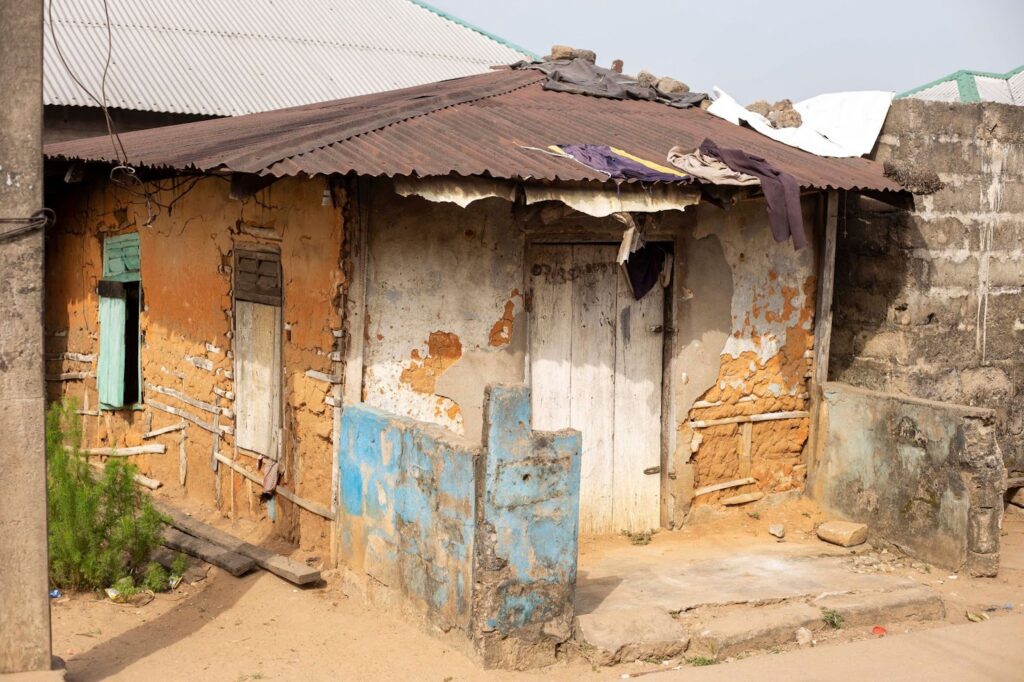
Interviews with victims and community health professionals, as well as air quality tests, provide new insights into the challenges stemming from gas flaring in Rivers state. HumAngle’s investigation in different communities revealed links between this activity and air pollution, which can result in physical discomfort, disease, and even death.
People in Egbeme, about a two-hour drive south of Obrikom, have also been experiencing health issues for similar reasons.
When John Nwosu left the Nigerian Army after 35 years of dedicated service, he envisioned a peaceful retirement in the three-bedroom apartment in his hometown, which he built with his sweat while working. Little did he know that health challenges would impair his return home.
“I never had any serious health issues during my years of service,” John said. However, shortly after settling back into the community, he began experiencing respiratory problems and persistent coughing.
Concerned about his deteriorating health, he sought medical assistance and was informed that his condition was likely linked to prolonged exposure to gas flaring in the community. Now, he spends a significant portion of his pension on medications and visits to the doctor.
“You can hear the coughing in the community; it’s become a common problem. The air feels heavy with pollutants, and it’s taking a toll on our health,” he lamented.
John and other Egbema residents expressed frustration toward the company responsible for the gas flaring and Nigeria’s federal government. They believe that the revenue generated from oil exploration in the community, which leads to harmful practices like gas flaring, should be used to address the resulting health challenges.
“The government needs to prioritise the health of its citizens. We shouldn’t suffer while they benefit from our resources,” he said.
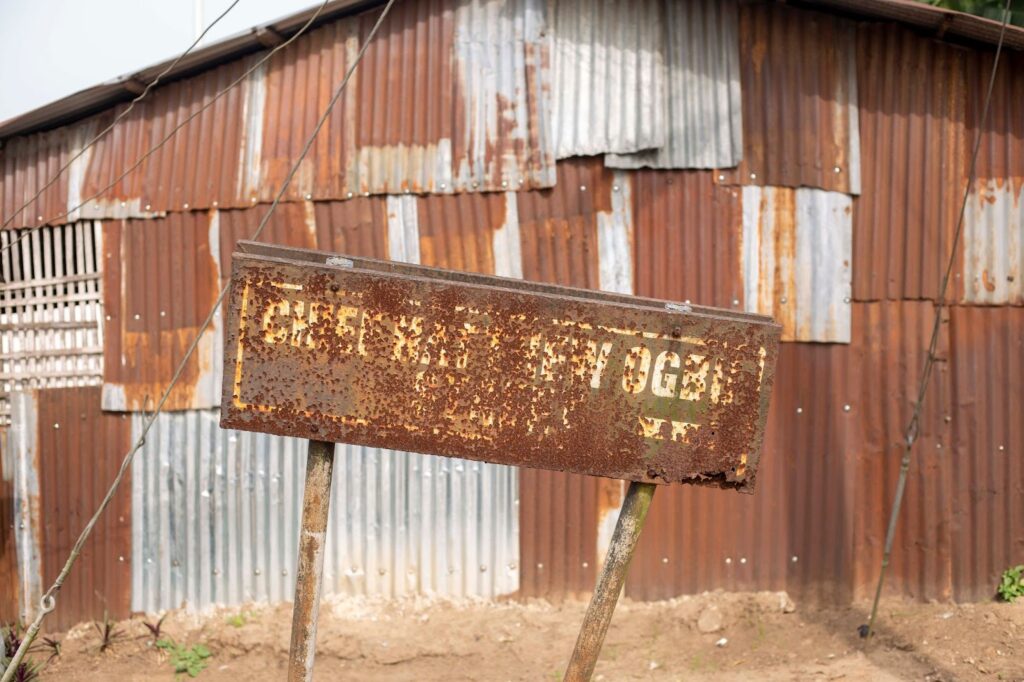
Gas flaring is the wasteful burning of natural gas from industrial oil extraction and production. The extraction process releases various environmental pollutants, including greenhouse gases, carbon dioxide, methane, and black carbon. Nigeria joins Russia, Iraq, Iran, and the United States among the world’s top nine countries responsible for most flaring — all collectively accounting for three-quarters of global flare volumes.
Countries with significant oil production and exploration activities tend to have higher gas flaring. With inadequate infrastructure, this excess gas is either incinerated at the top of towering stacks or in open pits on the ground.
The World Bank reports that if used properly, the gas wasted from the flaring process “could displace dirtier energy sources, increase energy access in some of the world’s poorest countries, and provide many countries with much-needed energy security”.
Within 11 months of its 2021 commitment to the UN to achieve net-zero emissions by 2060, Nigeria flared 216.5 billion standard cubic feet of gas — enough to generate as much as 21,700 gigawatt hours of power, which could power millions of households annually. In the Ogba-Egbema-Ndoni area, a total of 171 million Mscf of gas (valued at $598.5 million) was flared between March 2013 and March 2024, leading to the emission of 9.1 million tonnes of CO2, according to data from the Nigerian Gas Flare Tracker.
In Nigeria’s oil-rich Niger Delta region, about 50 communities have had to put up with gas flares burning continuously for decades, particularly in the city of Port Harcourt.
Residents of communities affected by gas flaring, including children like Paul, face increased risks of medical conditions such as respiratory disorders and cancer. A study conducted by researchers at the Rivers State University of Science and Technology revealed that residents of Igwuruta, a community also impacted by gas flaring, exhibit a high frequency of medical issues like eye and skin irritations.
Furthermore, a 2017 study highlighted that people residing in gas-flaring communities in the Niger Delta are 1.75 times more likely to develop hypertension compared to those living in areas without oil and gas exploration activities.
The Obiafu-Obrikom gas plant commenced operations in 1984, initially capable of processing 270 million standard cubic feet (MMscf) of gas daily, equivalent to emissions from 1.67 billion gallons of gasoline consumed. It underwent an upgrade in 1994, boosting its capacity to 400 MMscf/day, making it one of Nigeria’s most significant gas plants. The facility features three towering gas flare stacks dominating the community skyline. These stacks emit smoky methane-laden fire into the atmosphere every minute, contributing to air pollution.
While Nigeria Agip Oil Company, a subsidiary of Italian oil giant Eni, and the Nigerian government reap millions of dollars annually from the plant’s operation, Obrikom and Egbema residents like Amara and John grapple with health and environmental challenges.
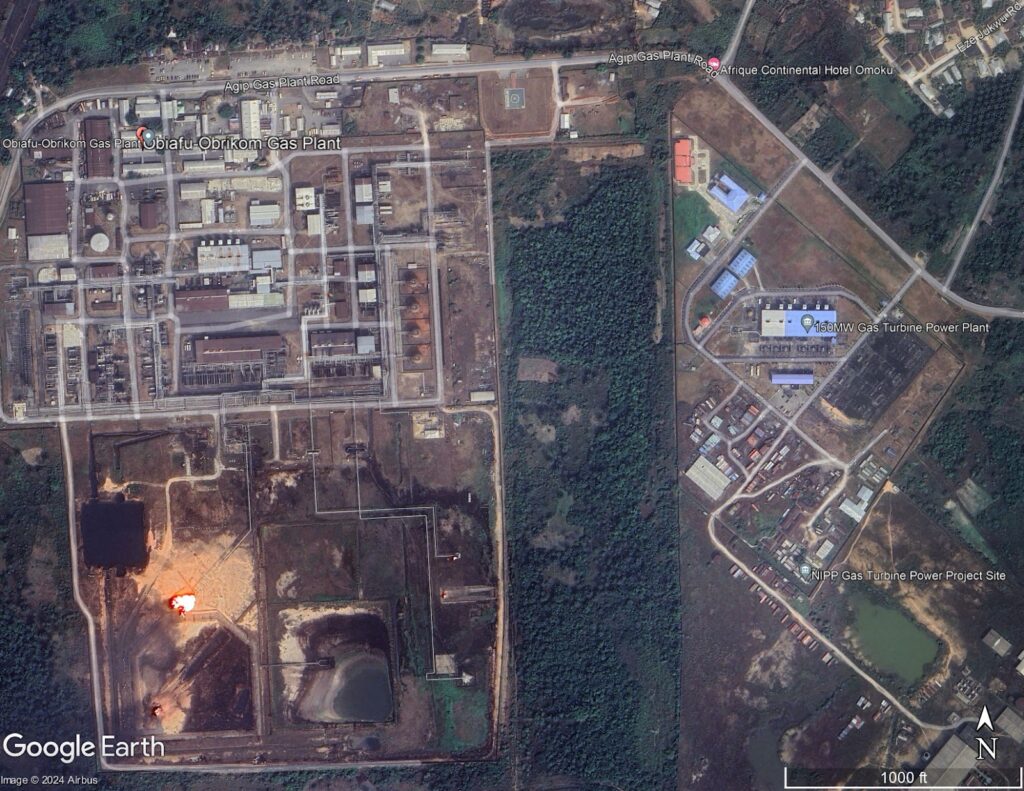
Respiratory challenges
Between late August 2013 and November 2023, records seen by HumAngle revealed that the Obrikom community hospital received 1,345 patients reporting respiratory health issues attributed to the air pollution caused by gas flaring activities in the area. Similarly, in the nearby Egbema community, located just a few kilometres away from Obrikom, the community doctor disclosed that they documented 2,124 respiratory health problems between January 2013 and November 2023, all linked to the impact of gas flaring.
“I can’t recall when the issue of gas flaring started, but I met it when I was employed in 2013, and since then, we have seen a significant increase in respiratory health issues among our patients, including symptoms such as coughing, wheezing, and shortness of breath,” said a doctor in Obrikom who asked not to be identified.
“These issues are directly linked to continuous exposure to air pollution from gas flaring activities. One factor that worsens the situation is that people don’t listen to our advice that they should come for a check-up if they notice any symptoms.”
Sharing similar concerns, another doctor from Egbema said since they noticed the trend, they have been advising residents to relocate to less-polluted areas, but many of them do not have the means to do so. She added that because of the facility’s limited resources and space compared to the volume of people with similar health issues, they have often had to refer patients to another hospital in town.
She said many more people are affected, but they choose to self-medicate, only reporting to the hospital when the case worsens.
“In our clinic, we have observed a rise in respiratory ailments among community members. Patients frequently report symptoms like chest congestion, sore throat, and difficulty breathing,” she observed.
These respiratory health issues are particularly prevalent among lower-class people, such as children, the elderly, and individuals with pre-existing respiratory conditions. Prolonged exposure to the toxic gases released during gas flaring can exacerbate respiratory symptoms and lead to more severe health complications over time. The delicate particulate matter and hazardous chemicals emitted during flaring can penetrate the lungs and raise the risk of respiratory infections and chronic respiratory diseases.
“The most common health issues include upper respiratory challenges, either directly from the flared gas or due to weakened immunity leading to secondary infections like bacterial, viral, or fungal infections,” stated Ademola Salahudeen, a medical doctor at the University of Ilorin Teaching Hospital.
“Additionally, there is a risk of developing tumours or cancerous growths in certain parts of the body, particularly upper respiratory infections such as lung cancer.”

Measuring the air quality
To corroborate these reports, we got a specialist to assess the air quality within the Ogba-Egbema-Ndoni area.
Atmospheric conditions play a crucial role in the behaviour of pollutants once they are released into the air. Epidemiological studies have demonstrated that particulate matter (PM10 and PM2.5) and certain gaseous pollutants like carbon monoxide (CO), sulfur dioxide (SO2), nitrogen dioxide (NO2), and ozone (O3) can cause respiratory infections, lung cancer, and other health issues, ultimately reducing life expectancy.
The field study included various air quality parameters, and the data collected was analysed to determine the concentrations of these pollutants. The concentrations of air pollutants were tested at locations near the flare site and 400 metres to Obrikom.
The analysis revealed elevated concentrations of air pollutants exceeding the limits set by the World Health Organization (WHO) and the Federal Environmental Protection Agency (FEPA). The air quality was mainly inferior in Obrikom about 400 meters from the gas flare site. Concentrations of Carbon Monoxide (CO), Sulfur Dioxide (SO2), and Particulate Matter (PM2.5 and PM10) were notably high.
Additionally, these findings indicate a strong correlation between pollutant concentrations and the activities occurring within the flare site, affecting the health of the residents. Carbon dioxide (CO2) is a crucial greenhouse gas stemming from the combustion of fossil fuels, with a half-life ranging from 50 to 200 years, contributing to global warming. Elevated levels of CO2 can lead to environmental hazards such as ocean acidification.
CO2 typically becomes a pollutant at 1000 parts per million (ppm) concentrations. However, the recorded CO2 values across various sample locations exceeded this. The Obiafu-Obrikom gas flare site exhibited a CO2 concentration of 1660 ppm, while the Obrikom community recorded a 1244 ppm value.
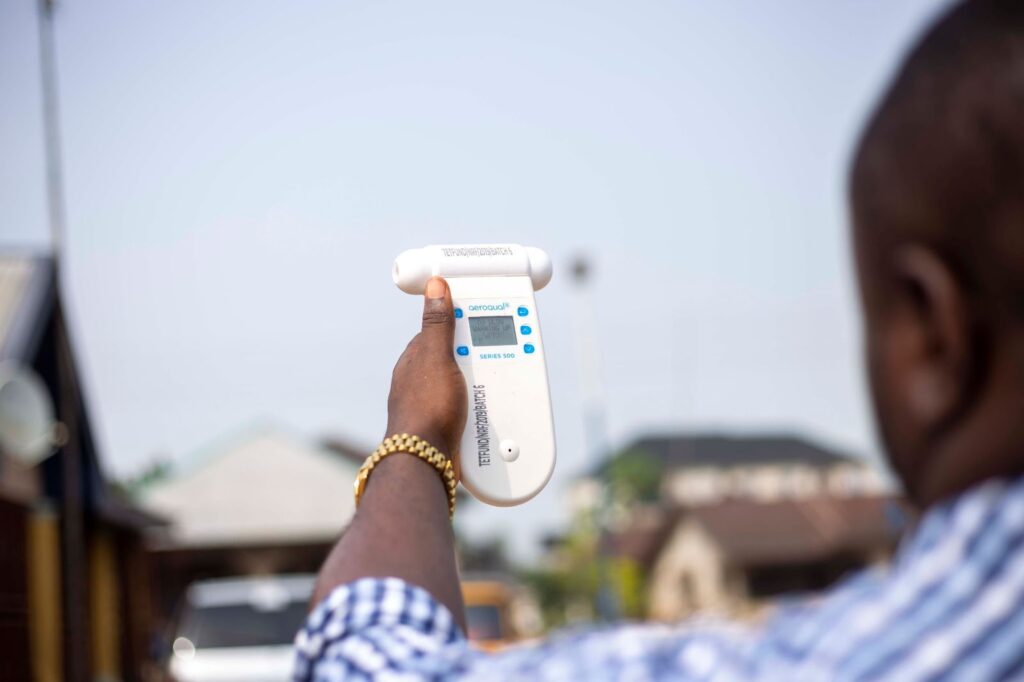
Nitrogen dioxide (NO2) is another significant environmental pollutant introduced into the air through gas stoves. At high concentrations, NO2 can lead to photochemical smog and various health effects, including pulmonary oedema and haemorrhage.
Carbon monoxide (CO) is colourless, odourless, and tasteless, generated from the incomplete fossil fuels in generators and automobiles. Exposure to CO can cause significant damage to the heart and central nervous system. The highest concentration of CO, at 10.88 mg/m3, was observed at the Obiafu-Obrikom gas flare site, significantly exceeding WHO’s permissible limit. This heightened concentration is attributed to the intense combustion activities at the gas flare site, which continually emit pollutants. Conversely, the lowest CO concentration (3.56 mg/m3) was found in the Obrikom community, indicating less pollution than the gas flare site. The reduced activity in this area results in lower CO levels, offering a relatively cleaner environment. However, the risk of adverse health effects remains elevated for individuals residing, conducting business, and working near the Obiafu-Obrikom gas flare site, posing potential long-term health consequences.
Sulfur dioxide (SO2) is an environmental pollutant and a primary component of acid rain formation. The highest concentration of SO2, at 3.67 mg/m3, was recorded in the Obrikom community, while the gas flare site exhibited a lower concentration of 2.56 mg/m3. This variance can be attributed to wind direction, transportation, and deposition. Excessive concentrations of SO2 can lead to respiratory problems, severe headaches, lung irritation, and damage to vegetation. It can also accelerate the corrosion of iron, zinc, steel, and aluminium.
Particulate Matter 2.5 refers to fine inhalable particles with diameters generally smaller than 2.5 micrometres, causing significant health risks due to their ability to penetrate deeply into the lungs and bloodstream, leading to permanent DNA mutations, heart attacks, asthma, chronic bronchitis, and premature death. The highest concentration of PM2.5, at 0.02 mg/m3, was detected in the Obrikom community, exceeding the permissible limit set by WHO. Similarly, PM10 was recorded at a higher concentration in the same community, with a value of 0.047 Mg/m3, surpassing the values observed at the Obiafu-Obrikom gas flare site. PM2.5 and PM10 are of more significant concern as smaller particles can penetrate deeper into the lungs, causing more severe health effects.
Overall, the community’s air quality can be characterised as poor, with concentrations mostly exceeding the minimum permissible limits for all tested air quality parameters.

| Pollutants | Readings at gas flare site (mg/m3) | Readings in Obrikom community (mg/m3) | WHO standard for 24-hour average exposures (mg/m3) |
| Co | 10.88 | 3.56 | 0.004 |
| SO2 | 2.56 | 3.67 | 0.04 |
| 03 | 0.0 | 0.018 | 0.1 |
| PM2.5 | 0.02 | 0.02 | 0.015 |
| PM10 | 0.032 | 0.047 | 0.045 |
A new legal dispensation?
Nigeria enacted the Petroleum Industry Act in 2021, with some of its sections designed to decrease gas flares and address the environmental and social problems caused by excessive flaring. Its goal is to safeguard the local environment, conserve resources, and ensure human safety by enforcing emergency shutdown procedures. It states that unauthorised flaring is an offence and requires companies that flare to pay a fee, which would be used for environmental remediation and to provide relief to the affected communities.
The Act compels companies to report gas flare data monthly. Failure to comply may lead to fines of up to $100,000 and suspension or termination of permits or licenses.
The law aims to promote accountability in tracking gas flare activities and enable effective monitoring. By emphasising transparency and regulatory compliance, it offers hope for affected communities.
Despite these efforts, however, data from the National Oil Spill Detection and Response Agency (NOSDRA) shows that Nigeria lost about ₦843 billion (over $1 billion worth of gas) to flaring between January 2022 and August 2023.
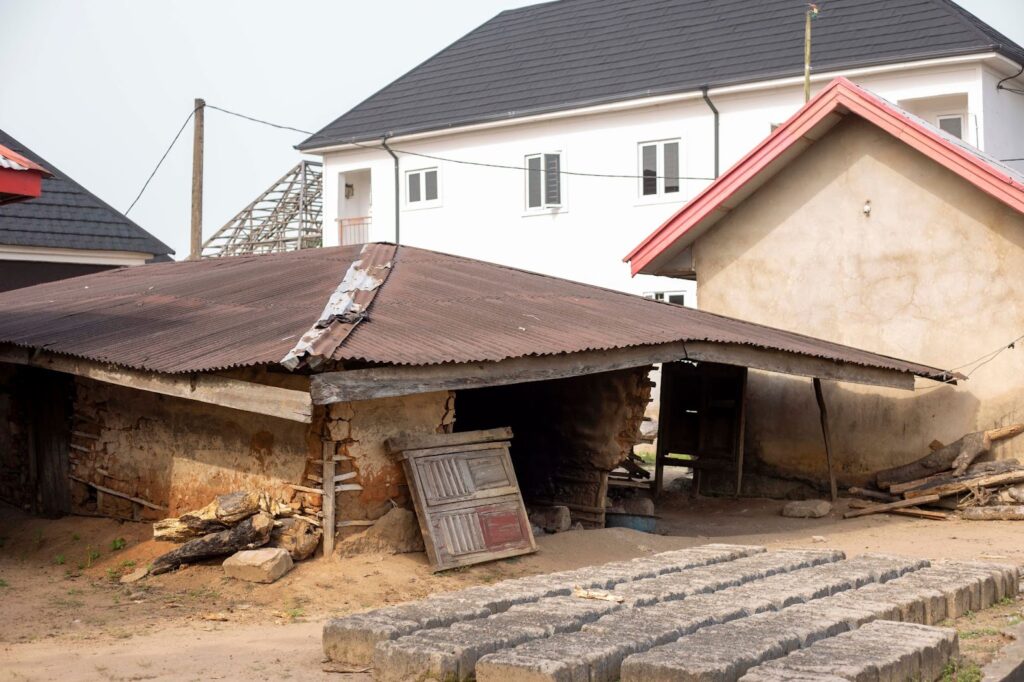
‘People are dying’
Henry Sunday, who moved to Obrikom in 2006, recounted how the incessant flames from the plant left laundry soiled with ash and exacerbated prevalent health issues such as ulcers and deteriorating eyesight. He also lamented the declining water quality and diminishing fish population.
“As a resident working in the medical field, I’ve observed a higher prevalence of ulcers among residents compared to other areas. Gas flaring causes significant health risks, but unfortunately, we have nowhere else to turn. There are more eyesight symptoms here than in other areas that I have stayed in before, and it’s because of the flames coming out from the gas plant site to the community,” he said.
He also stressed that the river, which used to be the sole water source for the entire community, is no longer drinkable like it was when he first moved here. They used to rely on it, even during rainy seasons. Additionally, he pointed out that only aluminium-zinc is suitable in the area; iron or gold zinc wouldn’t hold up due to the brutal effect of the pollution.

Beneath Okoro, a long-time resident, shared how the continuous exposure to gas flare emissions has led to dire consequences, such as the deterioration of zinc roofs and contamination of rainwater, rendering it unfit for use.
Expressing discontent with the lack of assistance from authorities, Okoro suggested the urgent need for comprehensive medical support for all affected community members. He also advocated for adequate compensation for those whose property has suffered damage due to environmental hazards.
“I have been staying here for about thirty years because of the flames coming directly from the gas flare plant. People are dying,” said Okoro.
“You can see how the flames destroy our zinc roofs. When it rains and the water mixes with the soot, it turns black, making it unusable. Inhaling the fumes, people are experiencing health problems, and sickness and death are prevalent. Just look at how many people have been buried; it’s because of that.”
This work was produced through a grant provided by the Wits Centre for Journalism’s African Investigative Journalism Conference and supported by the Bill and Melinda Gates Foundation.
Support Our Journalism
There are millions of ordinary people affected by conflict in Africa whose stories are missing in the mainstream media. HumAngle is determined to tell those challenging and under-reported stories, hoping that the people impacted by these conflicts will find the safety and security they deserve.
To ensure that we continue to provide public service coverage, we have a small favour to ask you. We want you to be part of our journalistic endeavour by contributing a token to us.
Your donation will further promote a robust, free, and independent media.
Donate HereStay Closer To The Stories That Matter




